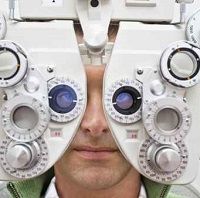Bevacizumab Produces Long-Term Regression of Retinal Neovascularization in Proliferative Diabetic Retinopathy
Study results show that the majority of patients with retinal neovascularization due to proliferative diabetic retinopathy treated with bevacizumab experience total, long-term regression of their symptoms.

Levels of vascular endothelial growth factor (VEGF) have been shown to correlate with severity of proliferative diabetic retinopathy (PDR), the advanced stage of DR that is the major cause of blindness worldwide, particularly in people of working age in developing countries. As a result, intravitreal injections of the anti-VEGF antibody bevacizumab (Avastin, Genentech/Roche), is often used off-label for treating diabetic eye disease, including retinal neovascularization (RN) in patients with PDR.
Now, the Pan-American Collaborative Retina Study Group (PACORES) has completed a retrospective review of the clinical records of 81 consecutive patients with RN due to PDR who were treated with Avastin at least once. In the study, the mean number of Avastin injections was 4 (range: 1—7), and the mean interval between injections was 3.5 months (±3.3 mos).
This chart review study was done at five Latin American medical institutions. Its principle investigator, J. Fernando Arevalo, MD, of Johns Hopkins University’s Wilmer Eye Institute, reported the PACORES study results at the Association for Research in Vision and Ophthalmology (ARVO) Annual Meeting in Seattle, WA, on May 2, 2016. The results were also published in an abstract included in the ARVO proceedings.
According to Arevalo, PACORES study examinations included fluorescein angiography. After a mean duration of follow-up of nearly 30 months, Avastin produced total regression of RN in 62 of 97 eyes (64%). Total regression was confirmed by an absence of fluorescein leakage noted during fundus examination with angiography. In addition, partial regression of RN was found in 26 eyes (27%).
Arevalo noted that the study included data from patients who had received laser therapy (proliferative retinopathy photocoagulation, or PRP) at least 6 months before any Avastin injection. He added that the degree of RN regression found in the study was driven by these patients: 75% of those with prior PRP had a good response to Avastin. However, in those who had no laser therapy previously, PDR was controlled or regressed in only 42% treated with intravitreal Avastin alone. And many Avastin-treated patients will still need non-medical therapy, said Arevalo, noting that about 58% of those treated with Avastin alone in the PACORES study required PRP or vitrectomy.
The PACORES study also found that three eyes with vitreous hemorrhage but no previous PRP did not require vitreoretinal surgery. Five eyes progressed to tractional retinal detachment that required vitrectomy. Such progression may have occurred owing to the natural history of the disease, Arevalo said. One eye had a vitreous hemorrhage and an increase in intraocular pressure. However, no systemic adverse events were noted during follow-up.
Along with fluorescein angiography, examinations in the PACORES study included measurement of best-corrected Snellen visual acuity and optical coherence tomography during baseline and follow-up visits. Results of these two assessments improved to a statistically significant degree (P<0.0001 for both).
According to Arevalo, the study was limited by its retrospective nature as well as a lack of randomization and a control group. Moreover, he said, although in this study treatment was given as required, more frequent treatment, like that given to treatment-naïve patients, produced better results.